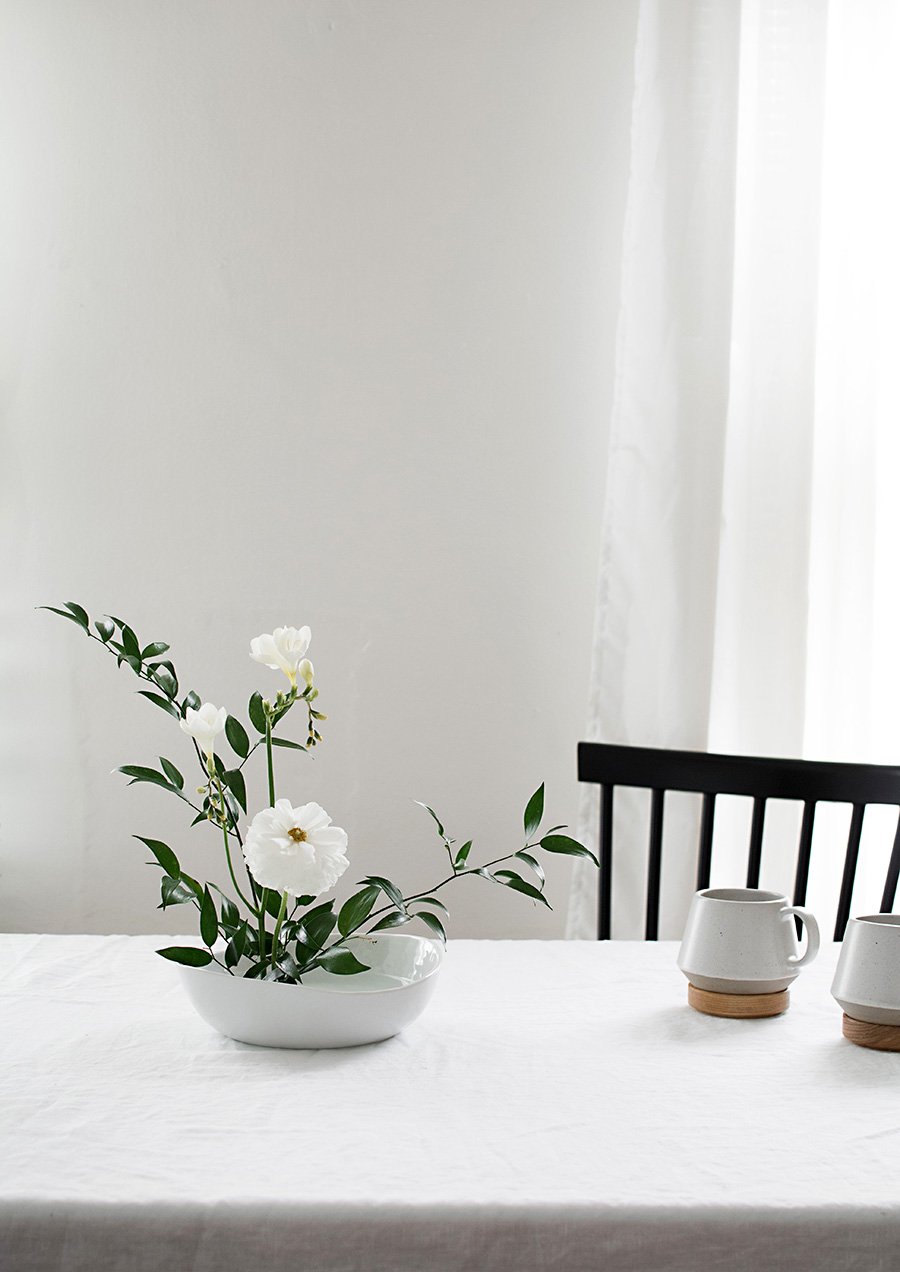 I was reminded while planning our upcoming trip to Japan of how I’ve really been wanting to try my hand at ikebana (came across classes to take and didn’t want to wait, so here I am!) Ikebana is the Japanese art of floral arranging. From what I’ve gathered in my short amount of practice, it’s about creating balance and flow, staying both true to nature while helping unfold its sculptural beauty, essentially building an ideal version of nature.
I was reminded while planning our upcoming trip to Japan of how I’ve really been wanting to try my hand at ikebana (came across classes to take and didn’t want to wait, so here I am!) Ikebana is the Japanese art of floral arranging. From what I’ve gathered in my short amount of practice, it’s about creating balance and flow, staying both true to nature while helping unfold its sculptural beauty, essentially building an ideal version of nature.
Its visual simplicity is a little deceiving! At first it’s enticing to think that we’re making the most out of fewer flowers to create an interesting arrangement, like this can save the day if we need to make a centerpiece with very few flowers, but because there are fewer stems it begs extra consideration for every detail, the shape and form of every flower and leaf, of every bend in each stem, because each characteristic is showcased and seen.
I ended up spending a lot more time than anticipated evaluating which flowers to go with, painstakingly picking within those bunches which specific ones to use, then cutting leaves and pulling off buds to better help the shape of the arrangement, inserting flowers, taking them out and replacing them with different ones, or greens, adjusting angles and lengths, all a few times over before ending up with something that made sense to me which in hindsight felt like it shouldn’t have taken that much time at all. In short, it takes practice, but it’s fun and meditative to spend time with flowers in such an intimate way.
While I’m not formally trained nor think that any style of arranging should always be followed strictly in its rules, I’ve picked up a few very basic concepts as guidelines to build off of in what is probably more accurately called ikebana-inspired floral arranging. Even more specifically, these steps follow the concepts of basic rising form ikebana (there are many different forms and types of ikebana). Hopefully this how-to will help get you started too!
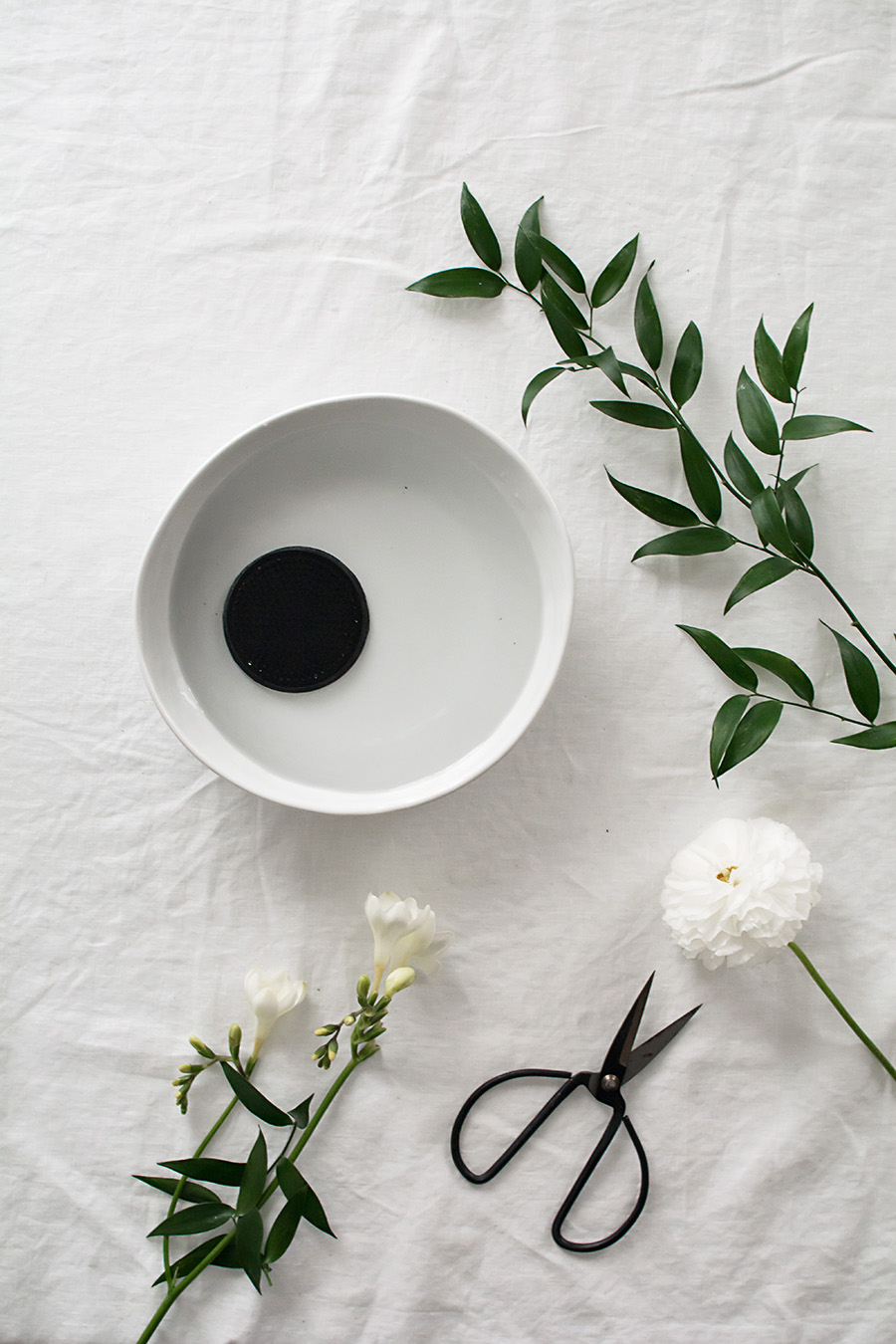
Materials:
shallow dish
kenzan aka flower frog
floral shears
flowers (I used Italian ruscus, ranunculus, and freesia)
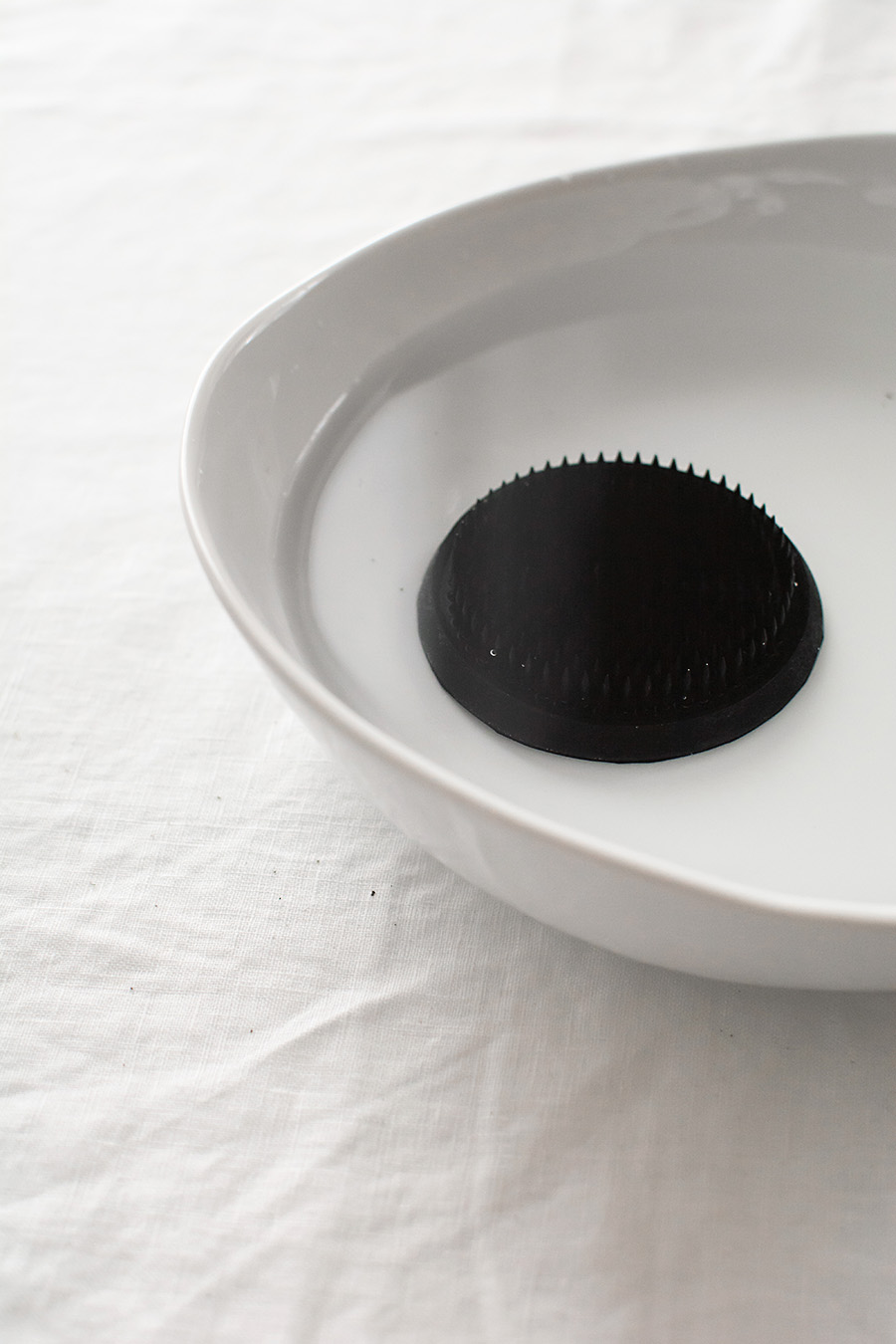
The MVP is the flower frog, which is a small metal device with a bunch of spikes for inserting the flower stems into. Place this at the bottom of the container, centered or off-centered depending on what you prefer, and fill the container with water until it just covers the top of the spikes

The first stem to insert in the frog is called the subject and should measure about twice the length of the width of the container. Put it roughly at an angle of 20 degrees in any direction (I chose slightly leaning back and to the left). In general, you want to insert everything at some sort of angle since that’s how it is in nature. Nothing should be perfectly straight up and down.

The second stem is the object, which should measure about 1/3 the length of the subject. Insert it at 45 degrees towards you. This is the focal point of the arrangement and it leans forward to draw your eyes in.

The rest of it is filler, which we can call the most individual and creative part of the arrangement. These can be at any length and angles as you see fit for complementing your subject and object. Putting greens and leaves at the base to cover the frog might also be something you want to do, though you don’t have to.

View from above showing which way each stem is leaning. Make sure to cut off any damaged or browning leaves, and continue to use this as a tool to shape your stems by cutting off any funky looking branches or leaves sticking out at weird angles that don’t work for your arrangement.
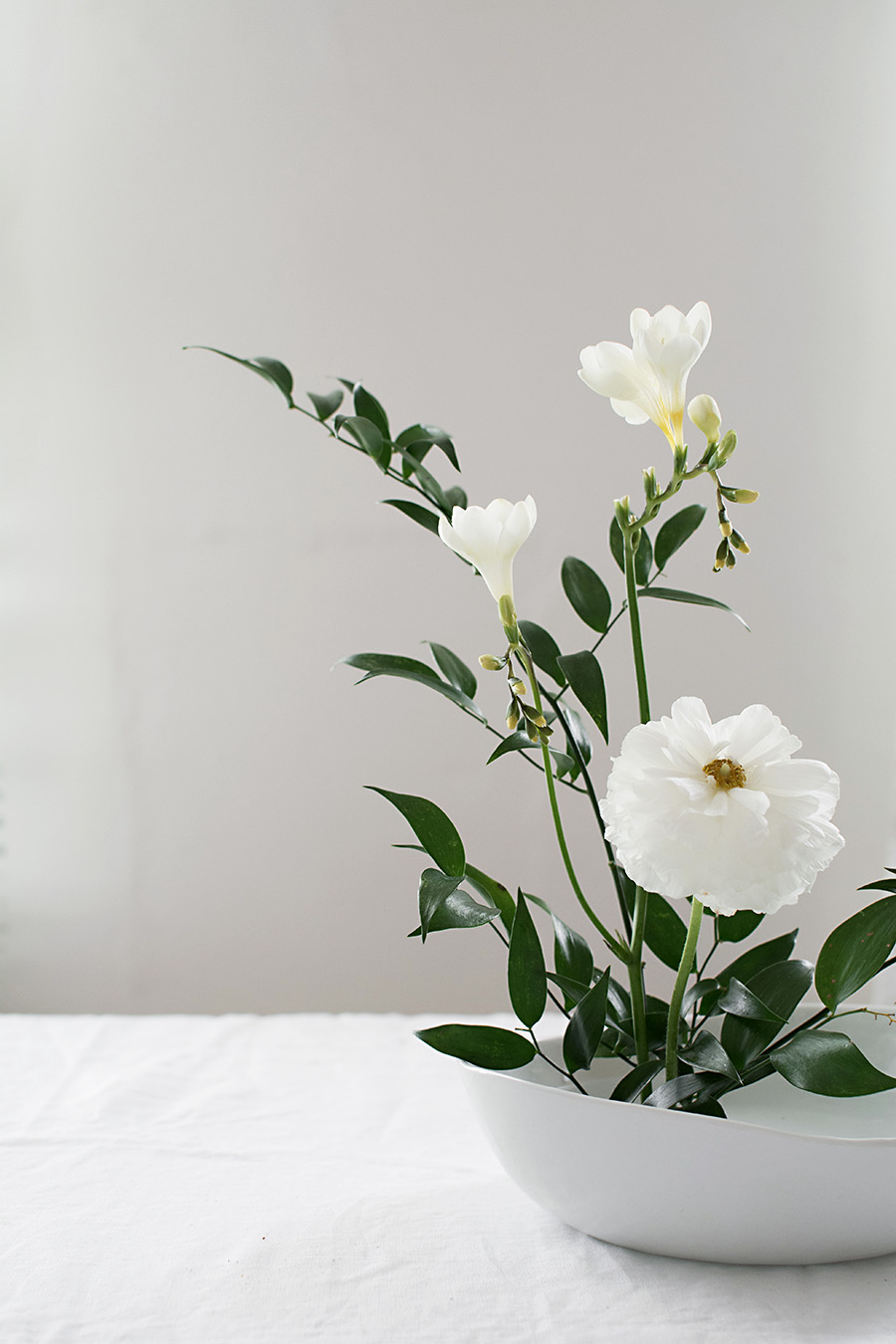
I think the most challenging part is picking which types of flowers or greens or branches to use. I’ve found it more interesting to use at least three different types, but the subject and object can be the same variety, or every element can be a flower, or whatever variant you can think of should definitely be tried.
I’m also in support of following no rules and sticking whatever flowers we want into the frog in whatever way we think looks good, though this wouldn’t be ikebana anymore haaa. I’ve been seeing more of this type of arranging lately and love how it can look whimsical on top of being so beautifully simple. There’s also just the practicality of using the frog to stabilize an arrangement that needs a little help staying in place. As always, experiment and find what works for you, and report back if you try it out!


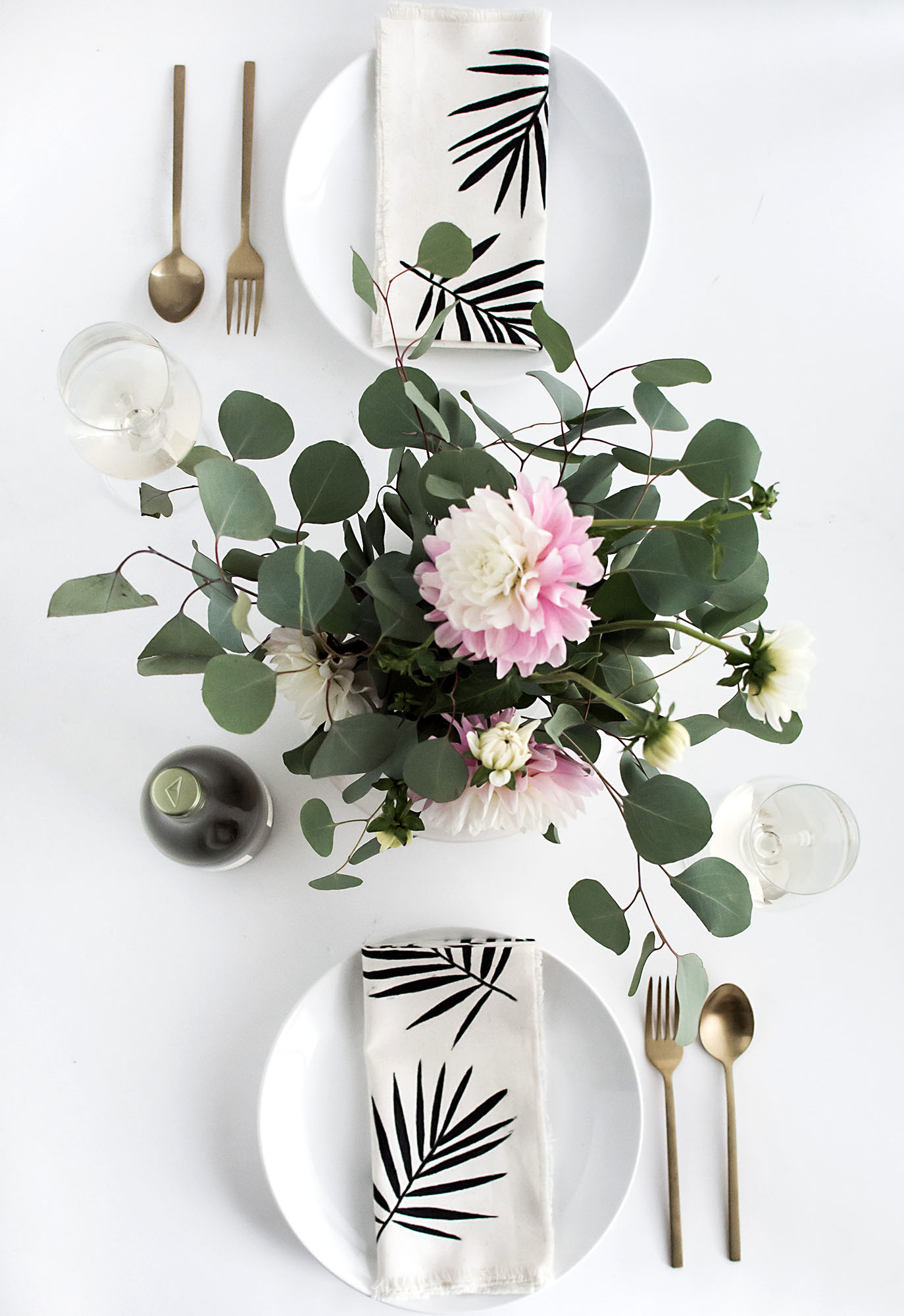
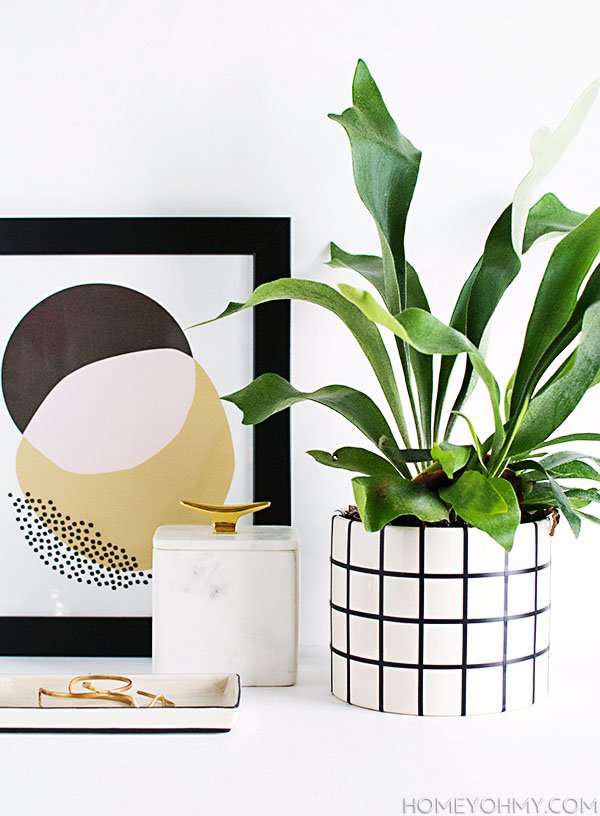
This looks so gorgeous, I never thought that this could be done so easily! I definitely want to try this!
https://www.makeandmess.com/
I love this! Who knew that only a few stems could look so elegant?
I love freestyle ikebana! Besides being beautiful and minimal, the flowers are also said to last longer because very little of the stem is soaking in water (I haven’t done a side-by-side to test though). Jealous of your Japan trip!
I totally noticed the flowers lasted longer! Thanks for the confirmation.
Nice
Those are really amazing.
Beautiful arrangement! I am painting it in water color and ikebana is extremely relaxing to paint! The simplicity and detail makes it a really lovely subject matter. Thanks!
You did a good job explaining. Thank you, Christa
Haha I hoped so! Thanks, Christa.